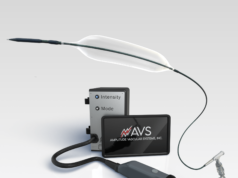
Surefire Medical has announced that the COSY clinical trial (Coiling vs. Surefire infusion system in Y90) showed significant reductions in fluoroscopy time, procedure time, radiation dose and contrast dose when using the Surefire Infusion System without coiling.
The randomised prospective study investigated the feasibility and benefits of performing Selective Internal Radiation Therapy (SIRT) planning without the need to place permanent coils.
“We were able to dramatically reduce all of the primary endpoints, most importantly procedure time (by >50%) and radiation dose (by 50%) to both patient and operator,” stated Aaron Fischman, principal investigator and assistant professor of Radiology and Surgery, Icahn School of Medicine, Mount Sinai, New York City, USA.
“Use of the Surefire Infusion System in the trial was safe, without any minor or major adverse events at 30-day follow-up. This technology has the potential to improve the safety and efficient delivery of SIRT in liver cancer patients,” added Fischman.
In addition to cutting procedure and radiation exposure time by half, fluoroscopic time was reduced by 70% and contrast dose by 50% when using the Surefire Infusion System for radioembolization planning.
In the study, which was statistically designed with a sample size of 30, half of the patients had permanent embolic coils placed in blood vessels to protect healthy tissue from damage. The other half underwent the procedure using the Surefire Infusion System without coiling.
The study evaluated the primary endpoint of fluoroscopic time between Surefire vs. a standard microcatheter. Secondary endpoints were procedure time, radiation exposure and contrast usage. The COSY trial showed that Surefire significantly exceeded all the statistically defined endpoints.
The Surefire infusion system has an expandable tip designed to minimise reflux and maximise direct-to-tumour delivery of cancer-fighting agents. It is used for diagnostic and therapeutic radioembolization or chemoembolization procedures.










